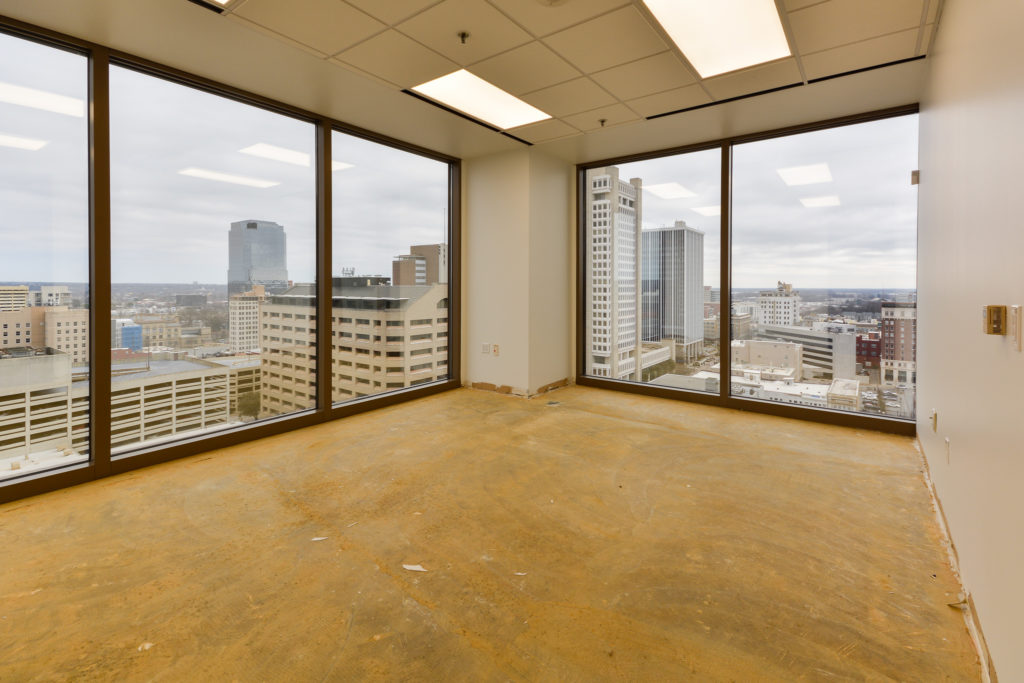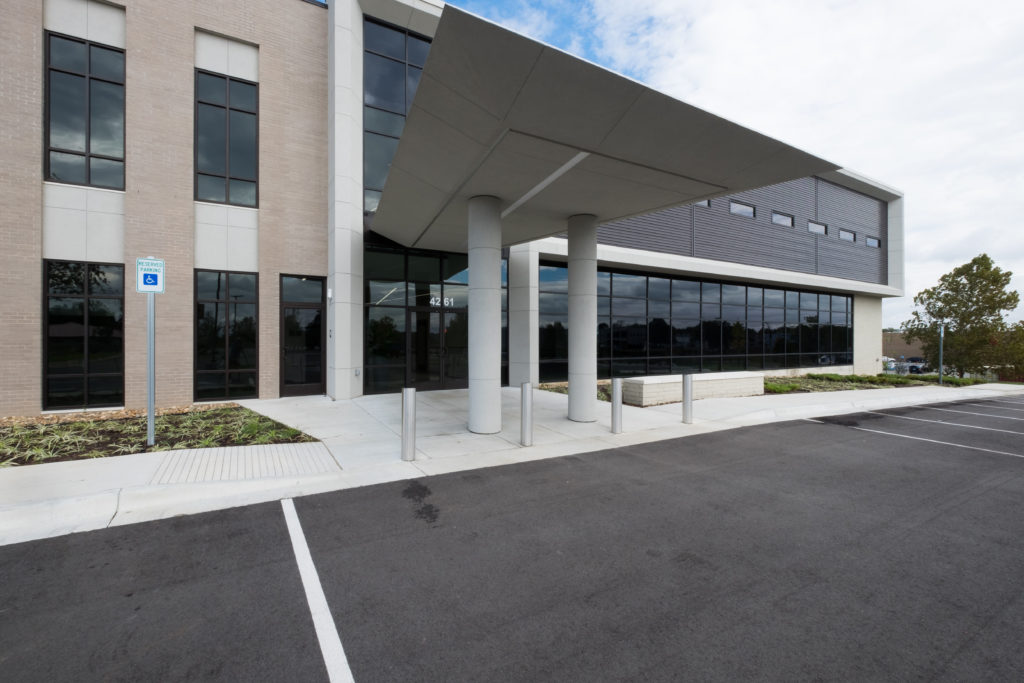As seen in The Daily Record
March 15 – 21, 2021
by Dwain Hebda
Of all the industries shaped by the events of last year, the impact of COVID-19 on commercial real estate is arguably the most profound. Beyond just impacting a tenant’s ability to pay, 2020 represented a seismic shift in how companies think about leased space and the role of such spaces in the still-dawning era of mass work from home arrangements and the ubiquity of residential retail delivery.
As a result, commercial real estate companies find themselves with the daunting task of reimagining their inventory right along with tenant and public usage patterns, even as the battered economy begins to plod along toward recovery.
The Daily Record sat down with several partners of Kelley Commercial Partners in Little Rock to catch a glimpse of where the market currently stands and what successful commercial real estate (CRE) firms must do to ride the change current brought on by the pandemic.
Change is the only constant
In almost every conceivable way, CRE has transformed market thinking in ways large and small, from the size of space footprints to the way those spaces are configured.
“Heading into the pandemic, I don’t believe that I really saw a lot of people trying to downsize their footprint. Everything was pretty much going on as normal, depending on the type of business that they’re in,” said Cheryl White, senior property manager.
“What we’re seeing on renewables is that a lot of the tenants are either wanting to downsize because so many people are at home and wanting to remain at home,” said White. “Or (they are) trying to work with them while they transition to see what they’re going to let their employees do, whether they’re going to let them remain at home or if they’re going to try to bring them back into the office setting.”
White said CRE companies that demonstrate sensitivity to tenants’ needs as they bring their people back or look for a new space will be critical. This means being flexible on office modifications that promote social distancing or making other investments that speak to health issues within a building.
“We’ve really tried to assure our tenants that we’re doing what we can with our building to promote health and safety,” she said. “From our cleaning and janitorial to having hand sanitizers in the building, we want to make it to where they feel safe enough to come to the office. We ask that they wear their mask and going through all of that protocol as well.”
Even so, most CRE firms are still in a reactive posture when it comes to such measures, given the large amount of uncertainty that still surrounds COVID-19. This puts pressure on management companies and building owners alike to remain light on their feet to adapt and adopt, quickly.
“As it relates to the near future, I’m not sure anybody can really guess or estimate what’s going to happen because we don’t know what’s going to happen with policy making or how the government’s going to address a lot of tenants’ needs,” said Nick Kelley, executive vice president. “People who have been getting [stimulus] help from the government, may no longer get it. It’s hard to know what’s going to happen in a lot of the spaces that we manage.”
“I do see encouraging outlooks, as it relates to commercial real estate. There’s been an increase in activity with the announcement of the vaccines. But the truth is, the immediate future is going to be hard to know because we don’t know what’s going to happen with the pandemic.”
Challenges related, but not identical
Specific needs within the CRE market, while all stemming from the same challenge of COVID-19, continue to vary widely. Not all segments come under duress at the same time or to the same degree, demanding something more than one-size-fits-all solutions.
“The three segments of the market that we deal with are all different: retail, office and industrial,” said J. Daryl Peeples, president and principal broker. “At the start of COVID, I spent a majority of my time dealing with retail as it was the retail tenants that couldn’t pay rent. So, we were working with our clients and with our landlords on a daily basis, negotiating rent forgiveness or rent deferral or a combination of those two things and trying to negotiate something on the back end of the lease to give them a little bit of relief.”
“The office spaces were dark, but office tenants, by and large, were paying rent. We weren’t dealing with the nonpayment of rent in our office environment,” continued the local real estate executive. “Today, the larger firms haven’t come back yet, but some of the smaller firms have. So, you’ve got the needs of that segment of the office market and then the segment that hasn’t come back to work.”
Peeples said the industrial market, by contrast, is one of great opportunity, particularly as it pertains to distribution and other flex-type spaces. It’s an example of one segment’s loss is another one’s gain.
“National companies, in general, are trying to focus on distribution, rather than having a retail presence,” he said. “It’s delivery to the homes and trying to improve their distribution of their products. I think they’ll be looking for more flex-type space to provide that product directly to their customers, rather than through a retail environment and that’s a very active market that we want to participate in.”
To that end, Central Arkansas has a distinct advantage with amenities such as the Port of Little Rock and other large footprints that have successfully lured the likes of Amazon.
“Little Rock’s been on a consistent growth pattern for 25-plus years,” Kelley said. “We get back to that rate with a slight uptick because of some of the industries that have started to look at Little Rock as a great opportunity thanks to our shipping ability, our intermodal transport. The Little Rock Port provides a service that’s second to none in the country and people are starting to catch wind of it and taking notice of it.”
“As the community adopts these new people moving in, these new companies and new employees, I think there will be an even greater push for Little Rock to continue to grow in that sector, which will benefit all of us.”
Adapt, adapt, adapt

Kelley Commercial Partners is converting the 12th floor of Simmons Tower to executive suites which offer professional, affordable spaces with flexible terms. The remodel should be completed by April 1, 2021.
All the partners interviewed agreed that some of the changes that have occurred as a result of COVID-19 are likely to be the norm rather than the exception going forward. The CRE companies that thrive in this new environment are those that can nimbly adapt to fundamentally new ground rules, be it in lease terms, office design or repurposing spaces for alternate uses.
“We have managed to increase and put some new tenants in and it’s all been because the landlord was willing to meet the needs of the tenant and give them the flexibility that made them comfortable to move in,” said Maggie Hogan, chief financial officer. “When people get back open, we’re going to see combinations where maybe not everyone has a private office because they don’t work everyday from the office. Or, people will still want to have an office, but maybe those offices are shared offices throughout the month.”
“I think the trend toward having higher density [in offices] is going to be less, even when COVID’s over. People are going to be a lot more aware, should another pandemic come around, of what we have to do to make sure that we’re prepared. I think people are going to be much more aware that it’s a possibility of having to make changes and being able to adapt quickly to changing situations.”
Peeples said repurposing of spaces will be of paramount importance moving forward. For instance, Kelley Commercial has transitioned several floors of Little Rock office space into “flex space,” what company leaders describe as an “office Airbnb” where drop in and short-term clients can utilize office amenities.
Similar repurposing is in demand. In a retail sector pummeled by online shopping and home delivery, yesterday’s retail store or bank branch is increasingly finding new life as something entirely different.
“The market tells you what’s going to work and what’s not going to work,” said Peeples. “Medical’s an excellent example. Health care entities are very active and are looking for 2,000- to 4,000-square-feet and landlords very quickly have to say, ‘Okay, what’s it going to take to accommodate that tenant?’ It might take a significant amount of money to refurbish a property for that type of use, but landlords are quick to adjust to the market.”

Stockton Medical Plaza at 4261 Stockton Drive in North Little Rock offers a great location and space ideal for health care providers.
“From my perspective, anything that’s B-retail is eligible to be converted to service office use, medical use, et cetera,” said Hank Kelley, Jr. CEO and executive broker. “This is a fantastic opportunity for the hospitals, the medical practices and the clinics that need retail-like locations to go grab some of those locations at a fraction of what they would spend to go build a building.”
“Look at all the bank branches that are around. They’re being repurposed. Why are they being repurposed? Because, they’re at some of the best locations that exist in the market. Most of them have drive thrus. In the restaurant world, if you have a vacant restaurant building that has a drive thru already built into it, somebody’s looking into that. I don’t care what part of town you’re in, somebody’s looking to do a drive thru business.”
More questions than answers
The pandemic situation still poses far more unknowns than concrete trends, the partners said, both for the company and for present and future tenants. From economic recovery to health aspects and availability of vaccines to as-yet unimagined government and regulatory changes, the CRE market is fluid at best.
“Today, you’re saying, ‘Well, what’s going to happen with the office market?’ I think that’s yet to be determined and I think the challenge will be in the next few years, as we deal with lease renewals on these offices,” Peeples said. “What is that going to look like now that these larger firms have had a year of working remotely? How’s that working for them? Is the savings of rent worth continuing to work in that environment?”
“We don’t know the answer to that yet. I think people are still in a wait and see mode before they make any decisions on where they’re going to lease space. We’re hopeful that in the second half of this year, the leasing activity will pick up.”
Hank Kelley said uncertainty in the market can also work in the company’s favor when talking to prospective clients trying to decide between building a new headquarters and leasing existing space.
“The availability of capital is more important now than it’s ever been,” he said. “On one hand, if I go to the bank and borrow 50% of the cost of the project, I have banks lining up to make that loan to me because there’s no risk to it.”
“But most people want to borrow 75% loan-to-value and the banks and the lenders are very risk-averse right now. Even though they don’t have a lot of loan losses, they can see where the potential for loan losses lies on the horizon and they’re being very cautious about what they’re lending.”
And even if a project can access capital, Hank Kelley said, clients are finding money isn’t going as far given higher construction costs such as materials and labor, only some of which is pandemic–related. Therein, he said, is CRE’s ace in the hole.
“The advantage we have as managers and owners of existing buildings is that the cost of our space is maybe 50 percent of what the cost of a new building is now,” he said. “We deliver extraordinary value to the users of those buildings, as compared to if they decide to move and go build something themselves. The last resort of any client that I’ve got is to come out of the ground with a new building on a piece of ground right now, unless it’s build-to-suit where no other building can be adapted to the client’s needs. We’re developing several of those right now and we’re glad to have that as part of our business.”
“But even then, any client that comes to me and says, ‘I’m thinking about relocating,’ I make them go through buildings that are existing to see if a building can be upgraded or remodeled because the end solution is going to cost them a fraction of what it would cost them to build from the ground up. So, there is hope for these buildings that are may be dormant right now. When the market comes back, existing spaces will have a real advantage.”




